Citric acid is a weak organic acid that occurs naturally in various fruits, especially citrus fruits. It offers potential health benefits, such as protection against kidney stones and enhanced mineral absorption.
Besides its occurrence in citrus fruits, citric acid is artificially added to medicines, foods, supplements, cosmetics, and more. In these products, it serves various purposes, including preservation.
While citric acid is typically linked to citrus fruits, citrus fruits are not the only ones with citric acid. Below, we compile a list of 19 fruits that contain citric acid.
Table of Contents
Apricots
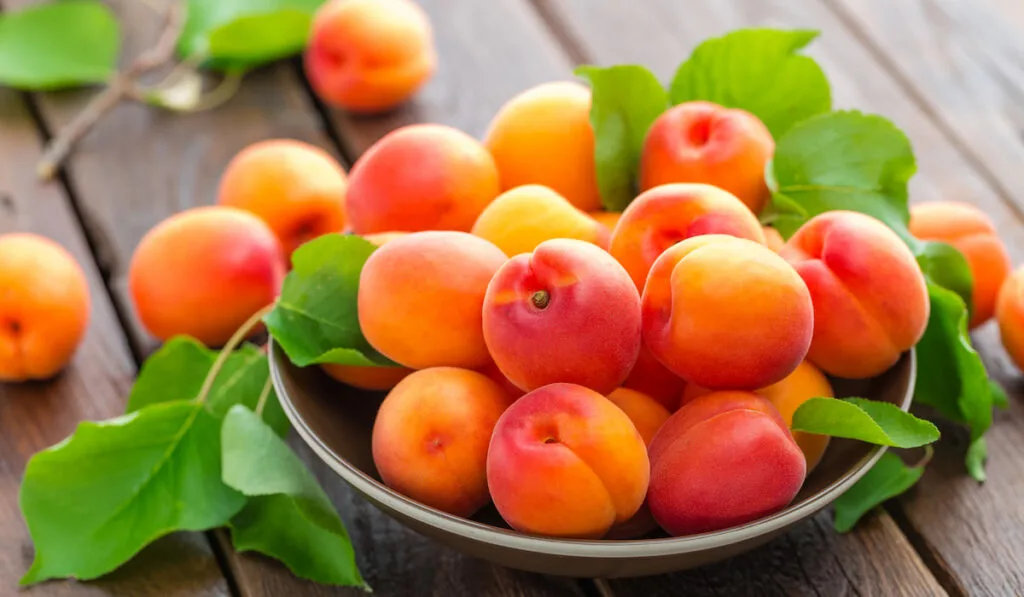
Apricots contain a fair amount of citric acid, which contributes to their sharp taste.
You will find citric acid in both dried and fresh apricots. However, the fresh ones appear to contain more citric acid than the dried ones.
Besides citric acid, apricots contain other organic acids, including quinic acid, malic acid, succinic acid, and ascorbic acid.
Of all the acids in apricots, citric acid and malic acid appear in the highest concentrations.
Blackberries
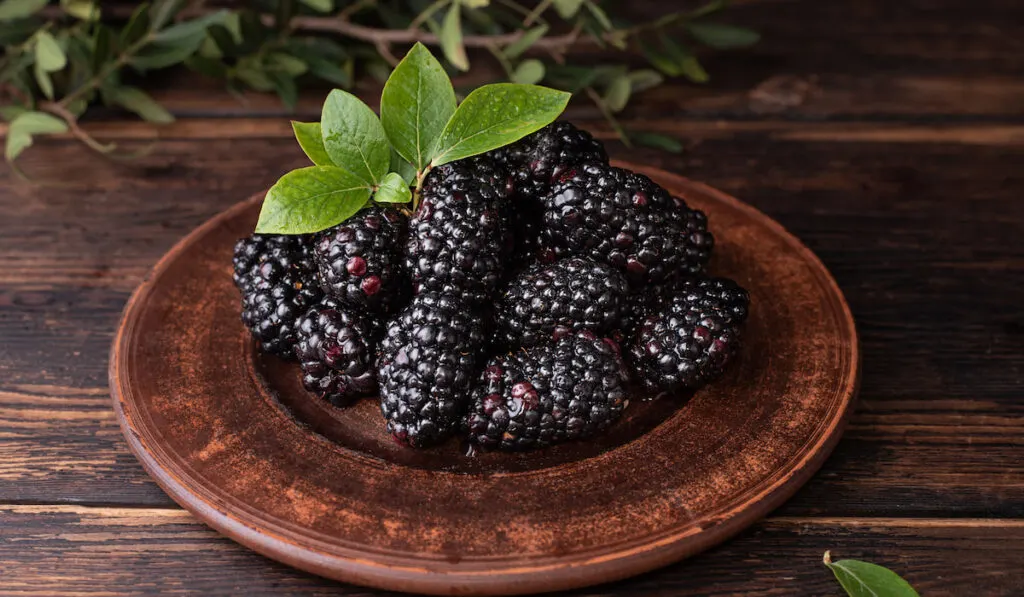
Since blackberries are an acidic food, it is no surprise that they contain various organic acids. While malic acid is the prevalent organic acid in blackberries, they also contain citric acid.
Apart from citric acid and malic acid, you will find other weak organic acids like shikimic acid, ascorbic acid (vitamin C), succinic acid, and fumaric acid.
Cherries

Like blackberries, cherries are acidic fruits containing various weak organic acids. While malic acid makes up around 75% of the total acid content in cherries, you will find some citric acid in them.
Besides malic acid and citric acid, you will also find quinic acid, phosphoric acid, and chlorogenic acid.
Cranberries
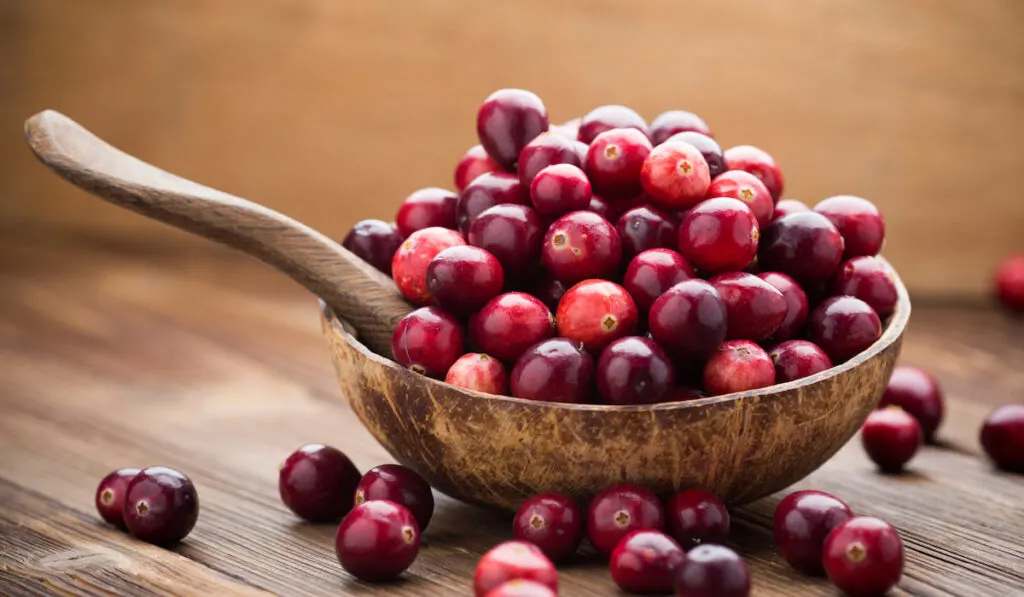
Cranberries contain a decent amount of citric acid. But compared to lemons, oranges, and limes, the citric acid in cranberries is minimal.
Apart from citric acid, cranberries contain ascorbic acid (vitamin C), malic acid, caffeic acid, and quinic acid.
Grapefruits

Grapefruits contain around 1.5% to 2.5% citric acid, which is a lot compared to many other fruits. Their relatively high citric acid content is not surprising since they are one of the citrus fruits.
Grapefruits also contain malic acid. Alongside malic acid, citric acid is the primary organic acid in a grapefruit.
Malic acid has potential benefits, including energy production, nutrient absorption, and endurance. Some people use it to enhance their performance in high-intensity activities like sports.
Grapes

The citric acid content of grapes is only around 5% of the total acid content, which is pretty minimal.
Still, this concentration of citric acid in grapes is valuable to the winemaking process. It helps increase the acidity of grape wines, especially wines from grapes grown in the tropics.
As we said before, citric acid makes up only 5% of the acid content in grapes. Most of the acidity in grapes comes from malic acid and tartaric acid. Besides those three acids, grapes may also contain succinic acid.
Kiwifruits

The kiwifruit is not a citrus fruit. However, one of its predominant acids is citric acid.
In kiwifruits, the total acid content is about 1%-3%, and 40%-60% of that is citric acid. The remaining is around 40% to 60% quinic acid and 10% malic acid.
You are likely to find more quinic acid in young kiwifruits. But during fruit development, citric acid typically dominates.
A kiwifruit’s taste depends on its sugar and citric acid content. The sugar brings sweetness while citric acid brings tartness.
Lemons
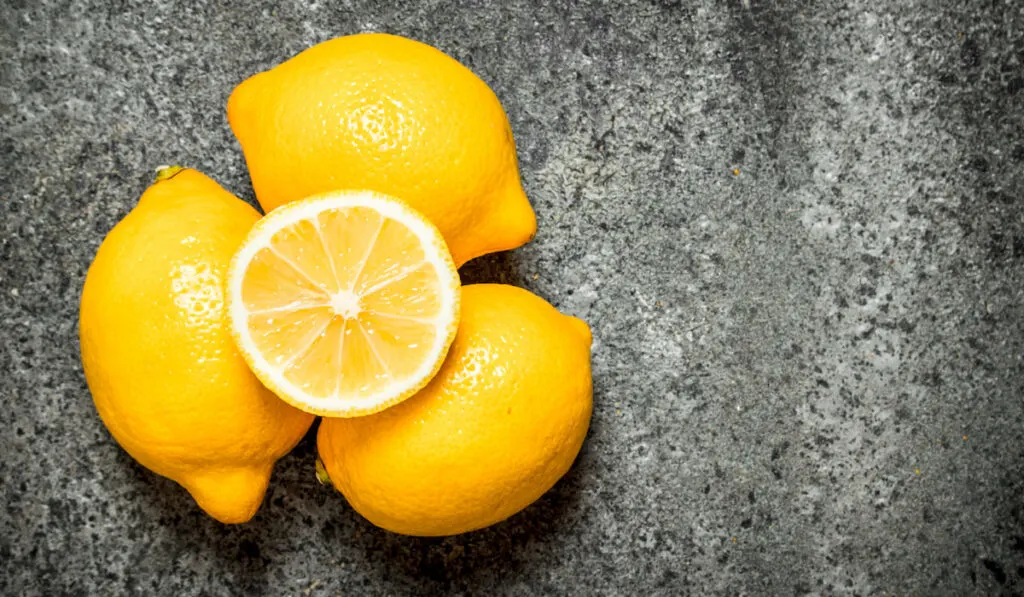
Lemons are citrus fruits.
Alongside limes, lemons have the highest amount of citric acid in fruits. Also, they are one of the most acidic fruits.
Lemons average around 50 grams of citric acid per 1 liter. Most fruits do not come close to having as much citric acid as this. Unsurprisingly, lemons are among the tartest fruits in existence.
Limes

Limes are citrus fruits too. Like lemons, limes have one of the highest citric acid levels of any fruit and are also one of the most acidic fruits.
The citric acid contents of limes and lemons are pretty close. However, you may find more citric acid in lemons.
While lemons average around 50 grams of citric acid per liter, limes average about 48 grams of citric acid per liter.
Mangoes

Mangoes have a low level of organic acids in them. So, understandably, they are only mildly acidic.
The acidity of mangoes comes primarily from citric acid and malic acid. But besides these two, mangoes may contain oxalic acid, tartaric acid, glucuronic acid, succinic acid, and muconic acid.
Oranges

Oranges are a citrus fruit – one of the most popular ones. Of course, since they are citrus fruits, they contain a more-than-decent amount of citric acid.
On average, oranges contain around 0.08% to 1% citric acid. This might not be as high as what you will find in grapefruits, limes, and lemons, but it is more than what most fruits have.
Besides citric acid, oranges contain about 50 to 70 mg of ascorbic acid (vitamin C). They also contain malic acid.
Peaches

As you may already know, peaches are not citrus fruits. However, you will find some citric acid in them. Citric acid is one of the three most abundant organic acids in peaches. The other two are malic acid and quinic acid.
Pears
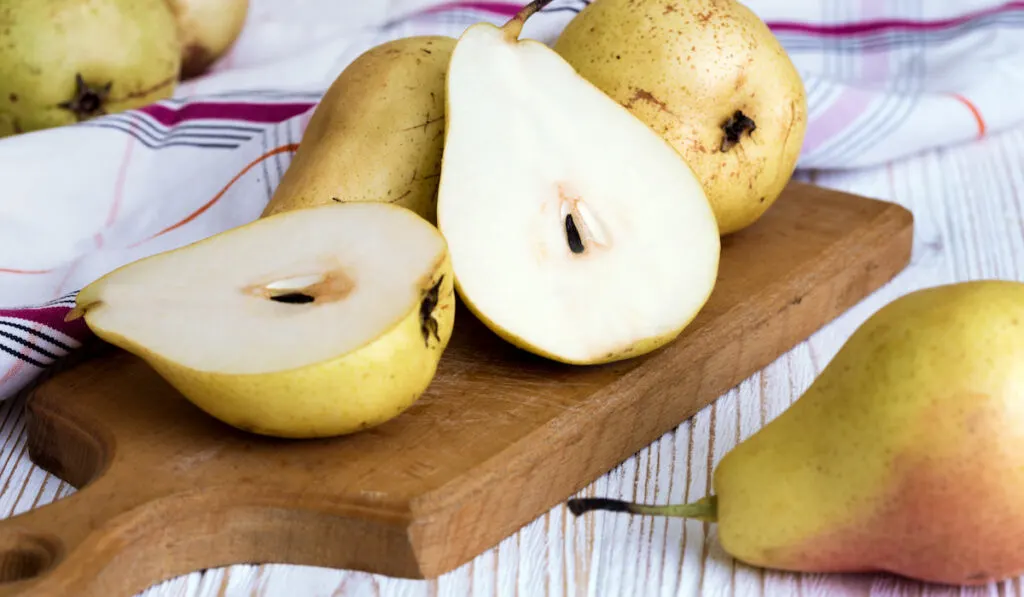
Citric acid might be the primary acid in pears. Some studies show the citric acid content of pears to be around 60% to 80% – about 0.9 mg to 2.8 mg per gram of pear.
Besides citric acid, pears contain malic acid. Malic acid might be the second most abundant organic acid in pears. Alongside citric acid and soluble sugars, malic acid determines the taste of pears.
The two acids introduce tartness to a pear’s flavor, while the sugar brings sweetness. The balance of both sides determines what you taste when you eat a pear.
Besides malic acid and citric acid, pears contain oxalic acid, shikimic acid, and quinic acid.
Pineapples

Pineapples might not be citrus fruits, but they are one of the most acidic. A pineapple’s pH is around 3.2 to 4. The tartness of pineapples comes from their citric acid content.
Pineapples have an acid content of around 0.6% to 1%. Of that 0.6%-1%, about 60%-80% is citric acid, and about 13% to 30% is malic acid.
Citric acid is the most abundant organic acid in pineapples, and malic acid comes in second.
Pomelos

Pomelos are a citrus fruit. So, unsurprisingly, citric acid is the most abundant acid in them. Citric acid makes up around 70% to 80% of the total acid content of pomelos. Next to citric acid in abundance is malic acid.
Besides malic acid and citric acid, pomelos contain pyruvic acid, tartaric acid, fumaric acid, succinic acid, and quinic acid.
Raspberries
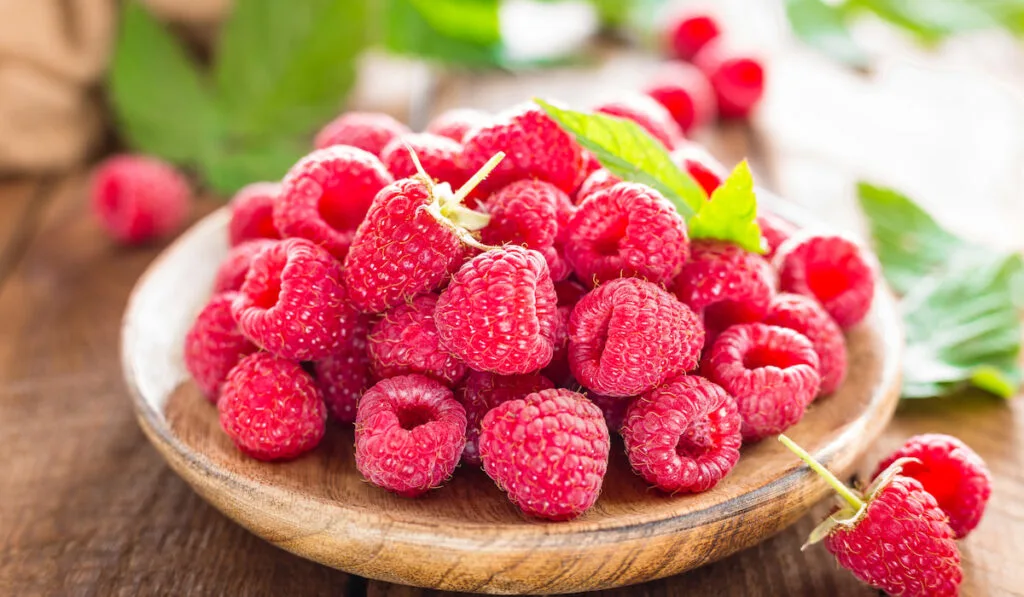
Raspberries contain a fair amount of citric acid. They are one of the berries with higher amounts of citric acid than other berries. Besides citric acid, raspberries contain malic acid.
Strawberries
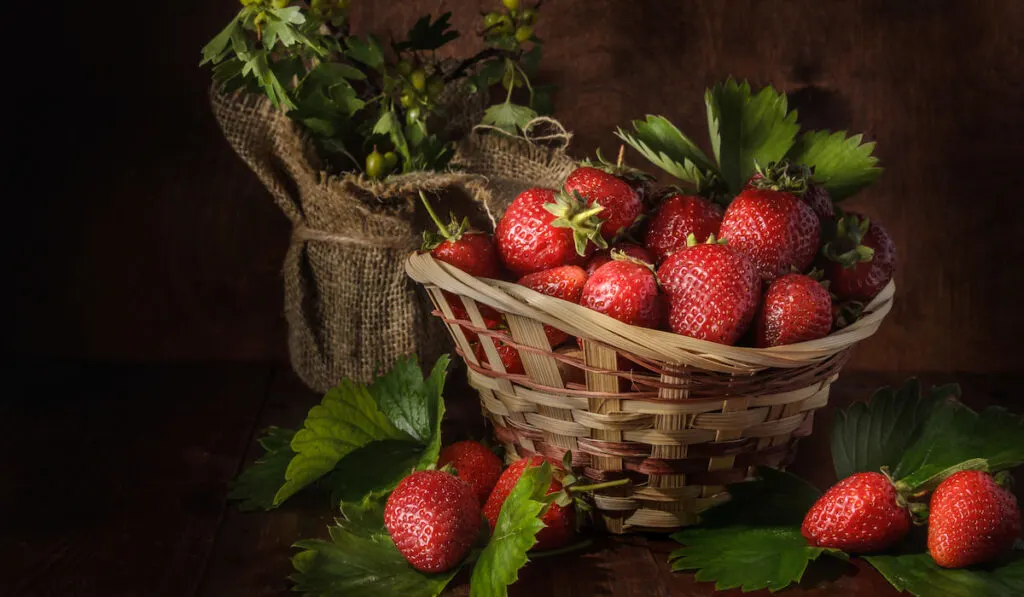
Citric acid is the predominant acid in strawberries. It makes up about 88% of the total strawberry acid content.
Unsurprisingly, strawberries are pretty tart. Besides citric acid, strawberries have ellagic, oxalic, succinic acid, and malic acid.
Tangerines
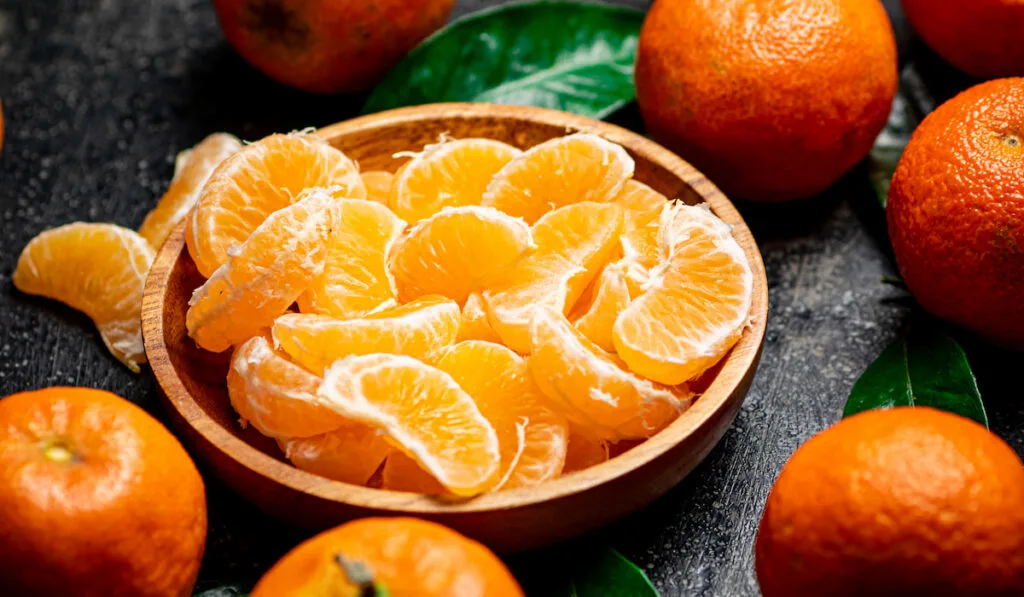
Tangerines are citrus fruit, so as expected, they have citric acid. Their citric acid content is about 1% to 2% – more than you’ll find in most non-citrus fruits.
Besides citric acid, tangerines contain ascorbic acid (vitamin C), pantothenic acid (vitamin B5), and malic acid.
Tomatoes

While tomatoes are not citrus fruits, they contain a fair quantity of citric acid. Citric acid is the predominant acid in tomatoes, making up about 9% of dry tomato weight.
Besides citric acid, tomatoes contain malic acid. Both are the most abundant acids in tomatoes, and their percentage depends on ripeness.
Resources
- https://www.healthline.com/nutrition/citric-acid
- https://www.livestrong.com/article/132609-what-fruits-have-citric-acid/
- https://www.sciencedirect.com/science/article/pii/S0304423817304259
- https://foodfaq.org/are-blackberries-acidic/
- https://www.sciencedirect.com/topics/pharmacology-toxicology-and-pharmaceutical-science/blackberry
- https://digitalcommons.library.umaine.edu/cgi/viewcontent.cgi?article=1015&context=etd
- https://academic.oup.com/advances/article/4/6/618/4595566
- https://www.sciencedirect.com/science/article/pii/S0926669010001147
- https://healthyliving.azcentral.com/what-are-the-acid-levels-of-different-citrus-fruits-12211908.html
- https://www.randoxfood.com/why-is-testing-for-citric-acid-important-in-winemaking
- https://www.sciencedirect.com/science/article/pii/S0308814606003839
- https://www.aprifel.com/en/nutritional-sheet/kiwi/
- https://www.smilesunlimited.com.au/thirteen-acidic-fruits-and-how-they-affect-your-teeth/
- https://www.medicalnewstoday.com/articles/citric-acid
- https://www.ncbi.nlm.nih.gov/pmc/articles/PMC2637791
- https://www.ncbi.nlm.nih.gov/pmc/articles/PMC6807195
- https://www.livestrong.com/article/528336-a-list-of-fruits-with-low-citrus-levels/
- https://healthyliving.azcentral.com/what-are-the-acid-levels-of-different-citrus-fruits-12211908.html
- https://www.sciencedirect.com/science/article/pii/S0026265X08001331
- https://ift.onlinelibrary.wiley.com/doi/pdf/10.1111/j.1365-2621.1956.tb16909.x
- https://www.ncbi.nlm.nih.gov/pmc/articles/PMC6681023/
- https://www.sciencedirect.com/science/article/abs/pii/S0889157522001016
- https://www.ncbi.nlm.nih.gov/pmc/articles/PMC6681023
- https://scholarspace.manoa.hawaii.edu/bitstream/10125/56212/1/Saradhuldhat.pdf
- https://citeseerx.ist.psu.edu/viewdoc/download?doi=10.1.1.563.4704&rep=rep1&type=pdf
- https://www.mdpi.com/2073-4395/11/12/2393/htm
- https://www.livestrong.com/article/221398-citric-acid-food-list/
- https://pubmed.ncbi.nlm.nih.gov/22924969
- https://foodfaq.org/are-strawberries-citrus-fruits
- https://www.researchgate.net/figure/Organic-acids-content-in-strawberry-fruits-of-different-varieties-expressed-as-g-kg-1_tbl4_309796144
- https://onlinelibrary.wiley.com/doi/full/10.1111/j.1745-4557.2007.00119.x
